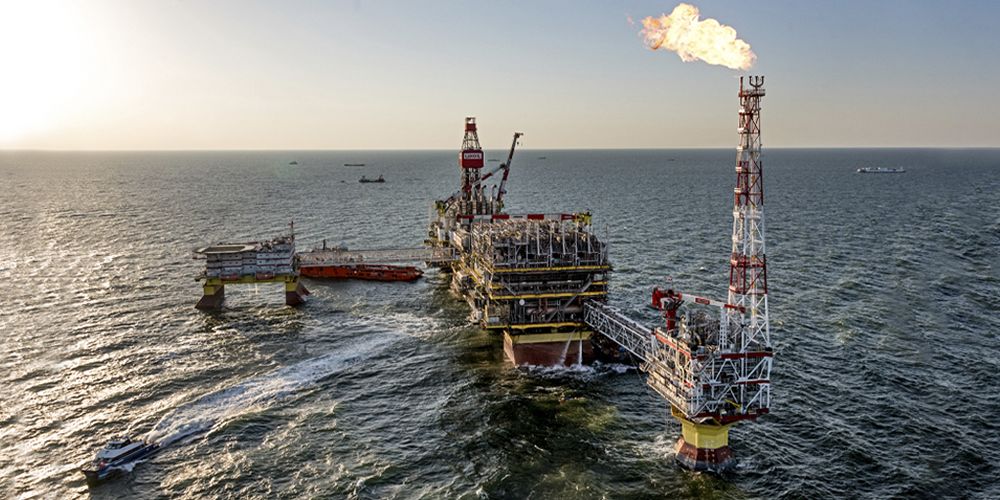Search

Publications
Russia – Azerbaijan: features of hydrocarbon partnership

A hydrocarbon sector of Russian-Azerbaijani cooperation is the most capital-intensive sphere forming the main flow of bilateral investments. Actually, this is the consequence of the hydrocarbon basis of the Russian and Azerbaijani economies. It is also worth noting that cooperation of the oil-and-gas companies stands apart and it is not always in the center of attention of regular sessions of the inter-governmental commission mostly focused on the themes of trade and economic cooperation and industrial cooperation.
Nevertheless the oil-and-gas agenda essentially creates an internal structure of architecture of the common CIS/EUEU cupola to which the remaining items are added from the economic agenda of Russia and «neighborhood belt» countries, including Azerbaijan.
This thesis is illustrated by the following figures: by early 2022 Russia invested 5 bn dollars into the oil sector of Azerbaijan’s economy, in the non-oil one about 1.3 bn dollars. Azerbaijan, in its turn, invested into the Russia’s economy 1.2 bn dollars and mostly in the oil sector, according to the data as of early 2021.
Investments by Russian oil-and-gas companies are markedly lower that those made, for instance, by British Petroleum. However, these are comparable with the investments that Baku had received from the infrastructure banks. In particular, EBRD since 1992 approved allotment of credits to Azerbaijan to the amount of almost 3.8 bn euro, while the World Bank while being present in the country financed Azerbaijani projects to the amount of 3.2 bn dollars.
The oil-and-gas agenda of Russia and Azerbaijan may include the following major items:
- operating contracts and agreements of SOCAR with the companies of Gazprom, Rosneft and Lukoil;
- separate projects of SOCAR in the territory of Russia (purchase of petrol AI-95, AI-98 at the Russian oil refinery plants in the period up to 2025, i.e. up to the end of modernization of the oil refinery named after Heidar Aliyev; as well as distribution of Azerbaijani polypropylene on the Russian market;
- promising projects of cooperation related to the new energy and geopolitical architecture of Eurasia.
Let us dwell on this from the point of view of interests of individual companies.
Projects of Gazprom and SOCAR
Gas cooperation between the countries in the past twenty years changed direction of supplies and their intensity.
In 2021 SOCAR and Gazprom agreed on scheduled, seasonal exchange of natural gas. The agreement provides for gas supplies from Azerbaijan to Russia in summer and for similar volumes from Russia to Azerbaijan in winter (about 1 bn cu m per year) up to the year 2023. But in practice volumes of supplies will depend on the level of production and consumption of gas in Azerbaijan in the summer months. The first supplies under this agreement began on November 15 this year.
Earlier, in 2017, eleven years after the previous supplies had stopped, Gazprom Export and SOCAR signed a contract on renewal of Russian gas supplies (volume about 1.6 bn cu m of gas per year). In 2015 a contract was signed, small in the volume of supplies, to provide raw materials to the methanol plant AzMeCo (supplies amounted to just a little over 100 million cubic meters).
Before 2006 Azerbaijan had bought gas from Gazprom directly and a certain part from Turkmenistan under a transit contract via the Russian gas transport system. In a way the year 2006 was a landmark: Azerbaijan launched production from the Shah Deniz field with gas reserves 1.2 trillion cu m).
Moreover, since 2010 it was Gazprom that began to buy gas from SOCAR to supply gas to Dagestan. However, supplies were often suspended because of repairs and gradually decreased. Thus, in 2013 these amounted to 1.4 bn cu m, in 2014 a mere 0.2 bn cu m and in 2015 they stopped.
Projected cooperation between Gazprom and SOCAR envisages several scenarios. According to one of them, Gazprom will begin gas supplies for the growing internal consumption in Azerbaijan of both industrial and domestic nature within the range of 12-15 bn cu m. On its side, Azerbaijan will send all the gas produced for export.
By the way, as early as 2018 all additional gas from the Shah Deniz field was contracted for supplies via the Southern Gas Corridor (SGC) which called for transportation of 16 bn cu m: to Turkey (6 bn cu m) and to Europe (10 bn cu m).
Based on the 2022 results, volume of export via SGC is forecasted already on the level of 22-23 bn cu m, including 11.5 bn cu m to Europe.
In 2023 in connection with rejection of direct supplies of the Russian pipeline gas EU countries may face a deficit of «blue flame natural gas» in the volume of 27 bn cu m; additional investments for its compensation are estimated at 100 bn euro (data of the latest report of the International Energy Agency «How to avoid gas deficit in EU in 2023»).
Therefore, it is highly likely that expansion of the South Caucasus Gas Pipeline making up the backbone of the TANAP and TAP mainlines is to occur. With this, presence of the Russian gas in the Azerbaijani export pipeline will not be considered as illegitimate circumvention of sanctions from the point of view of eurocracy, as officials from a number of EU national governments said in time. Besides, the mainline gas infrastructure of Azerbaijani export may become a full-fledged constituent entity of the new gas hub formed by Turkey and Russia. Therefore, one cannot exclude a situation when the Russian gas will be accumulated in Turkey, besides the TurkStream system, through Azerbaijan, too.
Gas motor project for mainlines of ITC North-South
One of the promising areas of cooperation between Gazprom and SOCAR may be a project related to expanding the network of filling stations supplying with gas motor fuel (what is meant is both methane and liquefied petroleum gas). It has prospects of becoming multi-faceted within the context of developing the ITC North-South and, in principle, within the framework of regional economic cooperation between Russia and Azerbaijan.
This matter may me considered as continuation of similar tasks that Gazprom had commenced to implement for heavy duty tractive vehicles on the Russian motor roads M-10, M-11, M-4, as well as on the future-oriented route Europe – Western China.
Analysis has already been made for expanding the network of autogas filling stations fitted with terminals for gas motor fuel supply in Dagestan. In the course of the Saint-Petersburg International Gas Forum held in summer 2022 Gazprom signed a program with the Government of Dagestan for building five methane autogas filling stations in Dagestan (13 filling stations are already operational) with deadline before 2025.
In the case with Azerbaijan it seems to involve the connection to this fuel supply system via the Caucasus route and setting up such filling stations within a new system of toll roads from the border at the Samur river to Baku. Naturally, it makes sense to develop such systemic cooperation with Iran too. It is also worth discussing what carriers should be provided with the necessary fleet of vehicles in the first place.
Gradual transfer of the automobile cargo traffic of the two countries to natural gas motor fuel tractive vehicles will also have an environmental effect because it reduces the CO2 releases.
Besides, the construction of a gas liquefaction enterprise will possibly be discussed.
It should be mentioned that Baku plans to assign its national carrier on the ITC routes North-South. It is possible that an automobile agency or a company with a new fleet of truck tractors working on liquefied petroleum gas or methane will be established depending on the economic profitability specifically for this project.
Besides, this project has prospects for developing the railway locomotive pool operating on gas engines via the corridor North-South. This is also an effective alternative to the necessary mandatory electrification of this route, including the section of the Zangezur corridor.
The Gazprom – SOCAR cooperation line has another, financial dimension. In 2015 Gazprombank granted SOCAR a credit in the amount of 420 million dollars for the implementation of the project related to the construction of the SOCAR Polymer plant. Its capacity makes it possible to produce about 200 thousand tons of polypropylene and 120 thousand tons of polyethylene per year. The main part of the products is exported to Russia via the SOCAR distribution network.
It is interesting that Gazprombank also set a credit limit of 2 bn dollars for ten years for various projects for the Azerbaijani structural Bank MBA.
Lukoil: oil, gas and renewable energy
Lukoil is a key Russian company in the sector of joint oil-and-gas production in Azerbaijan. However, the company’s interests are wider than solely production and export. Since 1995 Lukoil has been developing in the country its own sales network of filling complexes, the company also owns an oil base in Azerbaijan that provides transshipment of 120 thousand tons of petroleum products per year.
Construction of a wind-electric generating plant on the Caspian Sea coast may become an interesting project for developing joint power engineering. As of now SOCAR and Lukoil are about to complete the feasibility study report (FSR) for this project.
Also under consideration are possibilities of building a solar power station. In this field the Russian oil-and-gas company is sufficiently competent. In summer this year a 2.35 MW station was commissioned in the territory of the Krasnodar thermal power plant. It is the third in succession solar power generation facility in the south of Russia.
Earlier the company had successfully implemented two projects in 2018 and 2021 in the territory of its oil refinery in Volgograd with the total installed capacity of 30 MW.
But let us get back to the core activities. In 2020 SOCAR and Lukoil signed a memorandum of understanding on cooperation in exploring promising marine fields Nakhchivan and Goshadash in the Azerbaijani sector of the Caspian Sea.
The Nakhchivan structure is located in the deep water part of the Caspian Sea at 90 km south of the Absheron peninsula. The Goshadash structure is also located offshore at 20 km north-east of the Sumgayit city. The agreement on joint studies of the oil and gas potential of the Goshadash block in the Caspian Sea was signed in 2018.
These agreements can be considered a second stage of developing Lukoil petroleum projects in Azerbaijan where the company has defined its interests since 1994 when Lukoil undertook its first international project on the development of the field Azeri-Chirag-Guneshly (ACG), one of the biggest ones in the Azerbaijani sector of the Caspian Sea.
At that time of a rather chilly relationship between Moscow and Baku Lukoil became the first of the big Russian business entities that began their activities in Azerbaijan.
Later on Lukoil quit the ACG project and in November 2022 refused to export its Caspian oil from the Russian fields via the oil pipeline Baku – Tbilisi – Ceyhan because of consequences of economic restrictions imposed by western countries.
However, the company extended its participation in the development of the shelf gas condensate field Shah Deniz. In February 2022, on the eve of launching a special military operation and signing the Declaration on Allied Cooperation between Russia and Azerbaijan Lukoil completed the deal of buying a 9.99 per cent share in the Shah Deniz project from the Malaysian Petronas. The deal amounted to about 1.45 bn dollars. As a result, Lukoil increased its share in the project from 10% to 19.99%.
Rosneft and SOCAR: from joint venture to training of personnel
Interaction between Rosneft and SOCAR is rarely reflected publically, however, there are a number of important stages in the cooperation between oil-and-gas conglomerates that should be noted.
In 2014 Rosneft and SOCAR signed an agreement on establishment of a joint venture (JV) on exploration and production of oil and gas in various jurisdictions, besides Azerbaijan and Russia. The JV was set up on a parity basis by contributing to its authorized capital shares/stake of participation in the production assets in the territory of Russia, Azerbaijan and, what is interesting is that there is an opportunity of contributing assets in the territory of third countries. The list of JV assets was never revealed to the public.
Commenting on the agreement signed Igor Sechin and Rovnag Abdullayev noted that the document will make it possible to initiate concrete joint work related selection and implementation of large-scale projects in Siberia, on the Caspian Sea shelf and in other water areas, as well as will give opportunities to both the companies to enter into new sales markets.
Within the JV’s framework Rosneft supplied oil to the STAR oil refinery, SOCAR’s Turkish asset. Now the supplies were suspended temporarily.
However, in October 2022 Rosneft suggested that SOCAR should take part in the flagship project on Taimyr, at the Vostok Oil field. Rosneft’s project includes 52 licensed plots in the north of the Krasnoyarsk territory and in the Yamalo-Nenets Autonomous District in which 13 oil and gas fields are located as those of the Vankor group already under development and new ones. The project resource base is estimated at 6 bn liquid hydrocarbons. The first production of oil at the two fields of the Vostok Oil project – Payakhskoye and Ichemminskoye – is scheduled for 2024. For SOCAR it will become possible to expand its sales to the external foreign markets and to supply its own oil from Russia to the STAR oil refinery in Turkey.
In autumn this year the companies signed an agreement on cooperation in personnel training. It provides for organizing training of the Rosneft personnel under the joint educational programs based on the International Institute of Energy Policy and Diplomacy of MGIMO (Moscow State Institute of International Relations) and Azerbaijani State University of Oil and Industry in the following disciplines: alternative energy sources, management of large-scale oil-and-gas projects, administration and management of digital projects, management of scientific, technological and innovative activities.
Therefore, cooperation of Russia and Azerbaijan in the oil-and-gas industry and export will stimulate the development of economies of the two countries and will increase the potential of trade and economic interaction, including transport and non-resource projects.







